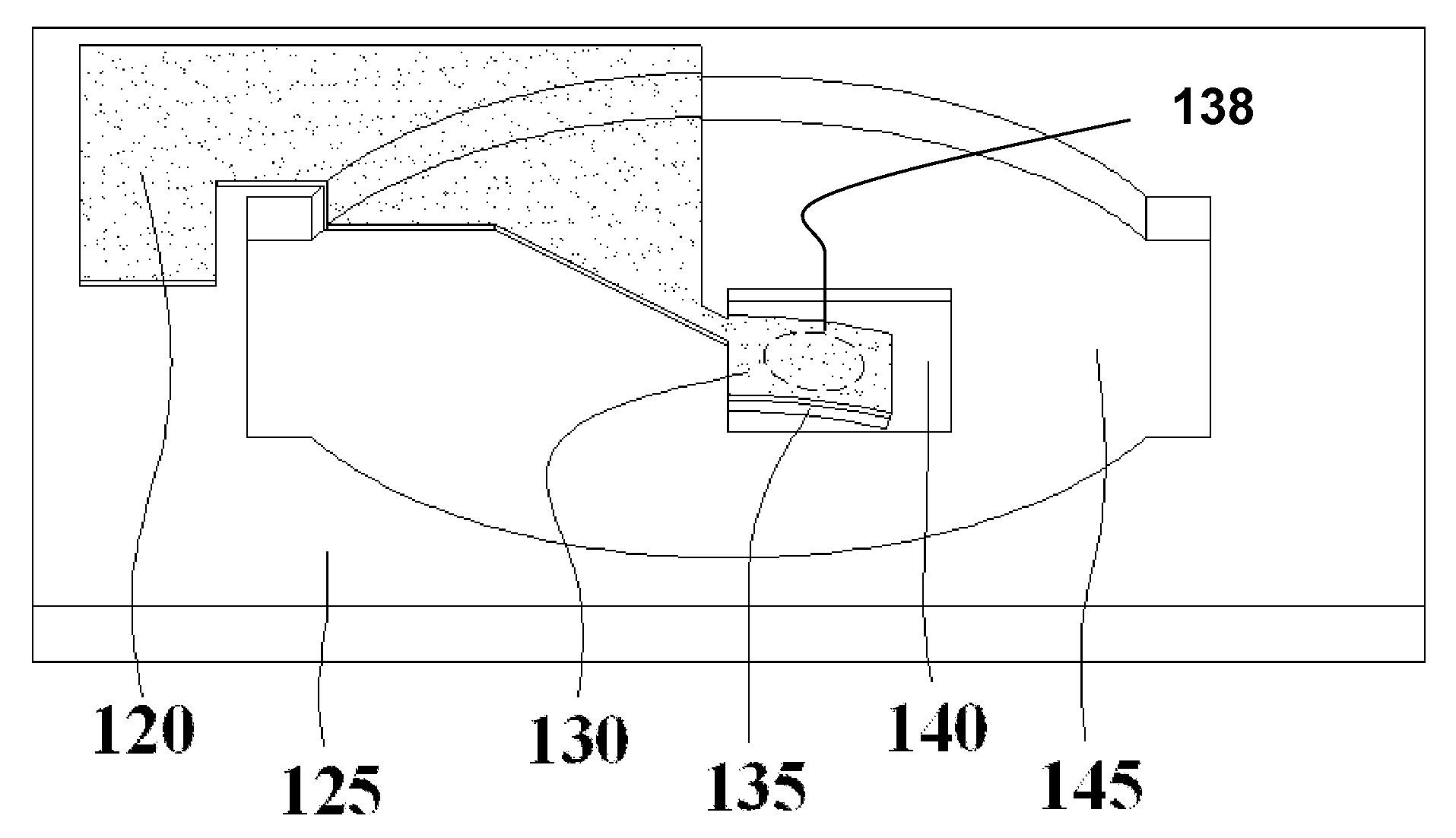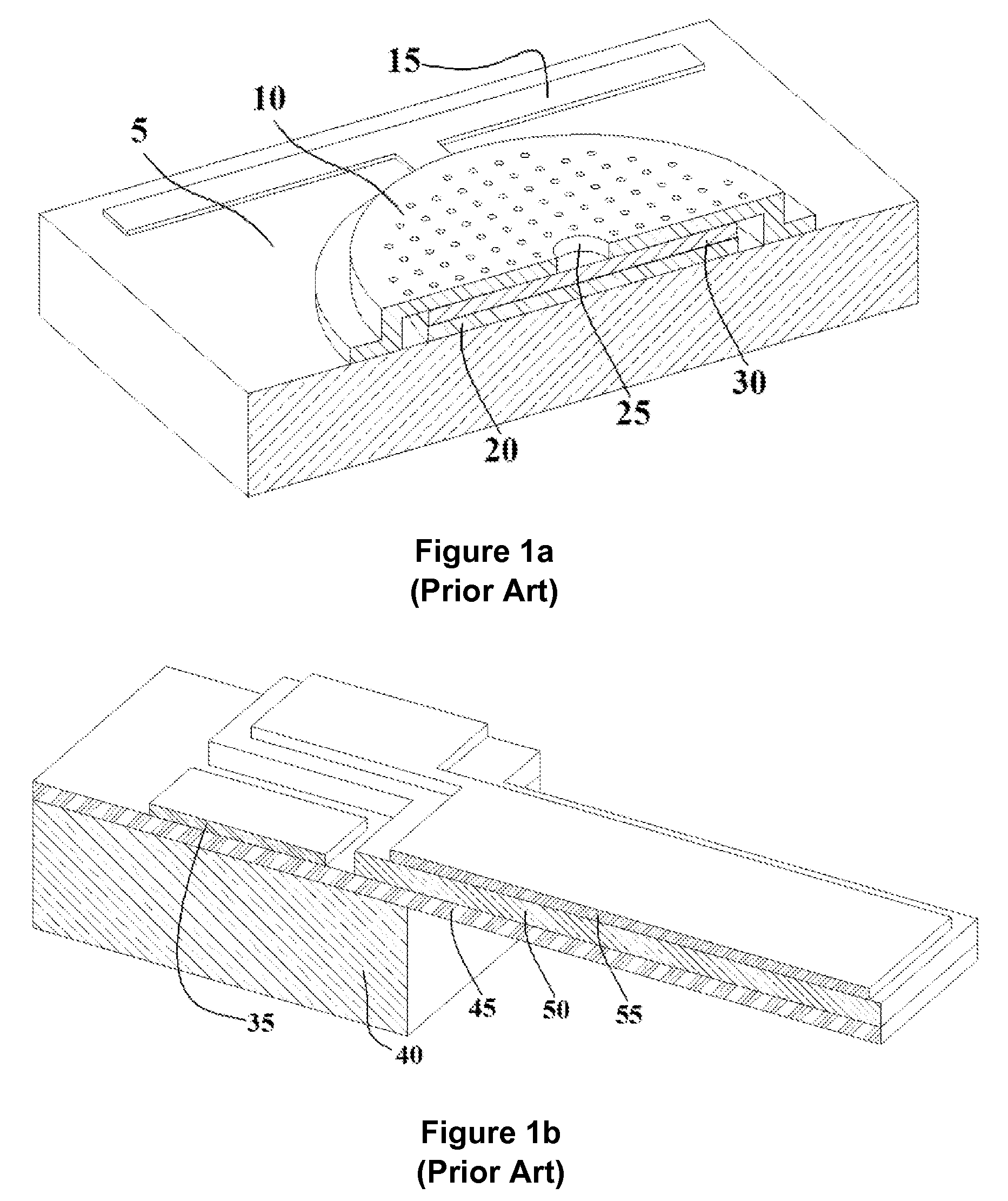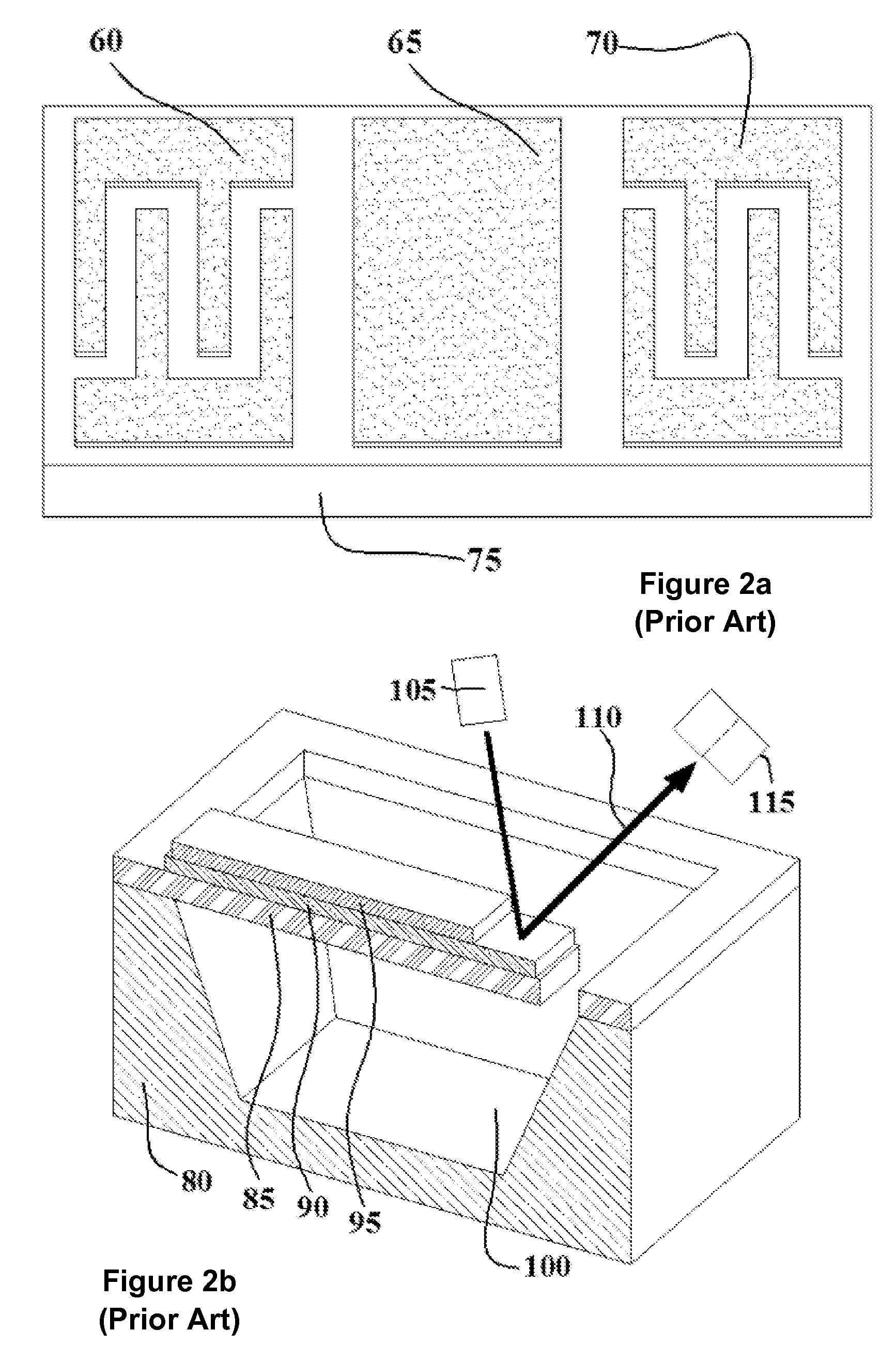High sensitivity microsensors based on flexure induced frequency effects
a microsensor and frequency effect technology, applied in the field of sensors, can solve the problems of insufficient sensing equipment, low system power, and prior systems that fell far short of customer requirements
- Summary
- Abstract
- Description
- Claims
- Application Information
AI Technical Summary
Benefits of technology
Problems solved by technology
Method used
Image
Examples
Embodiment Construction
[0077]A broad objective of the present invention is to improve sensitivity of sensor technologies by employing piezoelectric cantilevers. According to one embodiment, some of the improvements are based on the cantilever's geometric response to film induced flexure / strain when exposed to a target substance.
[0078]The piezoelectric cantilever in one embodiment utilizes the fact that the resonating active acoustic wave regions of an AWD supported on or near the cantilever will respond to the flexure induced strain (and geometric change in the cantilever), caused by the increase or decrease in film stress when a sensing film along the length of the cantilever is exposed to some influence such as a target gas. The sensing film will experience an increase or decrease in internal stress causing the cantilever to bend (geometry change and strain) and this will, in turn, cause a corresponding change in frequency in the acoustically distinct AWD fabricated thereon, termed the active acoustic r...
PUM
 Login to View More
Login to View More Abstract
Description
Claims
Application Information
 Login to View More
Login to View More - R&D
- Intellectual Property
- Life Sciences
- Materials
- Tech Scout
- Unparalleled Data Quality
- Higher Quality Content
- 60% Fewer Hallucinations
Browse by: Latest US Patents, China's latest patents, Technical Efficacy Thesaurus, Application Domain, Technology Topic, Popular Technical Reports.
© 2025 PatSnap. All rights reserved.Legal|Privacy policy|Modern Slavery Act Transparency Statement|Sitemap|About US| Contact US: help@patsnap.com



